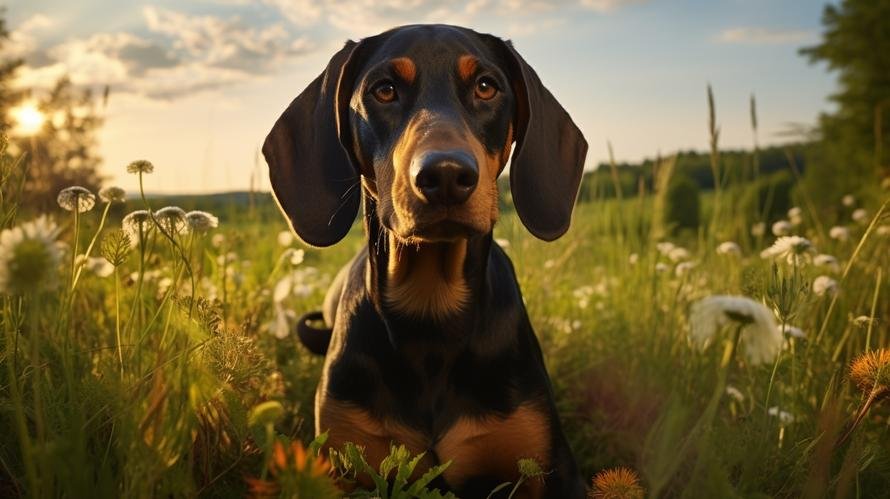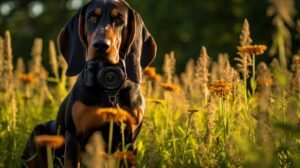If I were to tell you that the Black and Tan Coonhound received its name because of its role in raccoon hunting, would you find that interesting? Well, hold onto that curiosity, as there’s more to this breed than meets the eye. Stick around as we explore the character of this canine giant and debunk some misconceptions about its ‘dangerous’ reputation.
When we think of dangerous dogs, we generally imagine breeds with a reputation for aggression, like a Pitbull or a Rottweiler. So, is the Black and Tan Coonhound, a hound primarily bred for tracking and cornering raccoons, really a dangerous breed? The answer might surprise you.
One of the most pertinent qualities of the Black and Tan Coonhound is their sheer determination when on the scent. This stubborn streak, combined with their notable size and strength, could potentially lead to issues if misunderstood. However, it’s vital to remember that these dogs are hunting hounds at heart. They’re hardwired to pursue their targets relentlessly, but this doesn’t necessarily translate to aggressive behavior.
The truth is, Black and Tan Coonhounds are generally good-natured, outgoing, and friendly dogs. They enjoy companionship and exhibit unyielding loyalty to their human family. This breed is known for being sociable, not just with humans, but also with other dogs. Those long, droopy ears and soulful eyes? That’s their trademark. Black and Tans are more likely to offer friendly sniff and tail wag than a growl or a bite!
That isn’t to say that these dogs don’t require careful training and socialization, as any breed would. If not properly trained or if they are left to their own devices too often, they can become unruly or exhibit destructive behaviors. Their distinct howls and barks can also cause issues with neighbors if you live in an apartment or a cramped suburban neighborhood.
But remember, breed alone doesn’t label a dog as dangerous. A dog’s behavior is generally tied to the way it has been raised, trained, and treated. Therefore, as a pet owner, it’s your responsibility to guide your Coonhound, giving it the care, attention, and discipline it requires. This will ensure your canine companion grows into a friendly, obedient, and non-threatening presence around both people and other creatures.
Early socialization is key to raising a well-adjusted Black and Tan Coonhound. Exposing your young pup to a variety of sights, sounds, experiences, people, and animals will help them learn to react positively to different situations. Also, consistent rules and boundaries will prevent Coonhounds from becoming overly assertive or uncontrollable.
Training a Black and Tan Coonhound can be a challenge because of their independent nature and sometimes stubborn temperament. However, with positive reinforcement techniques and consistency, you can help shape them into dependable, well-behaved pets. Remember, these dogs were originally bred to work semi-independently from their human handlers. This means their persistence and inquisitiveness are not signs of defiance, but rather, leftovers from a time when the ability to think on their paws was a matter of life or death.
With all these things considered, labeling a Black and Tan Coonhound as a dangerous dog would be inaccurate and unfair. Like any breed, they require compassionate care, socialization, and training to enhance their gentle, loving nature. Sure, they may be a little stubborn at times, and their size can look intimidating, but beneath that rugged exterior lies a heart of gold.
In conclusion, don’t judge a dog by its breed alone. If treated with understanding and kindness, a Black and Tan Coonhound can make for an excellent family pet, a perfect companion for those long country walks, and a loyal friend for life.
So, if you’re considering bringing a Black and Tan Coonhound into your family, expect lots of love, laughter, and maybe a little mischief – danger, however, is hardly part of their routine!



